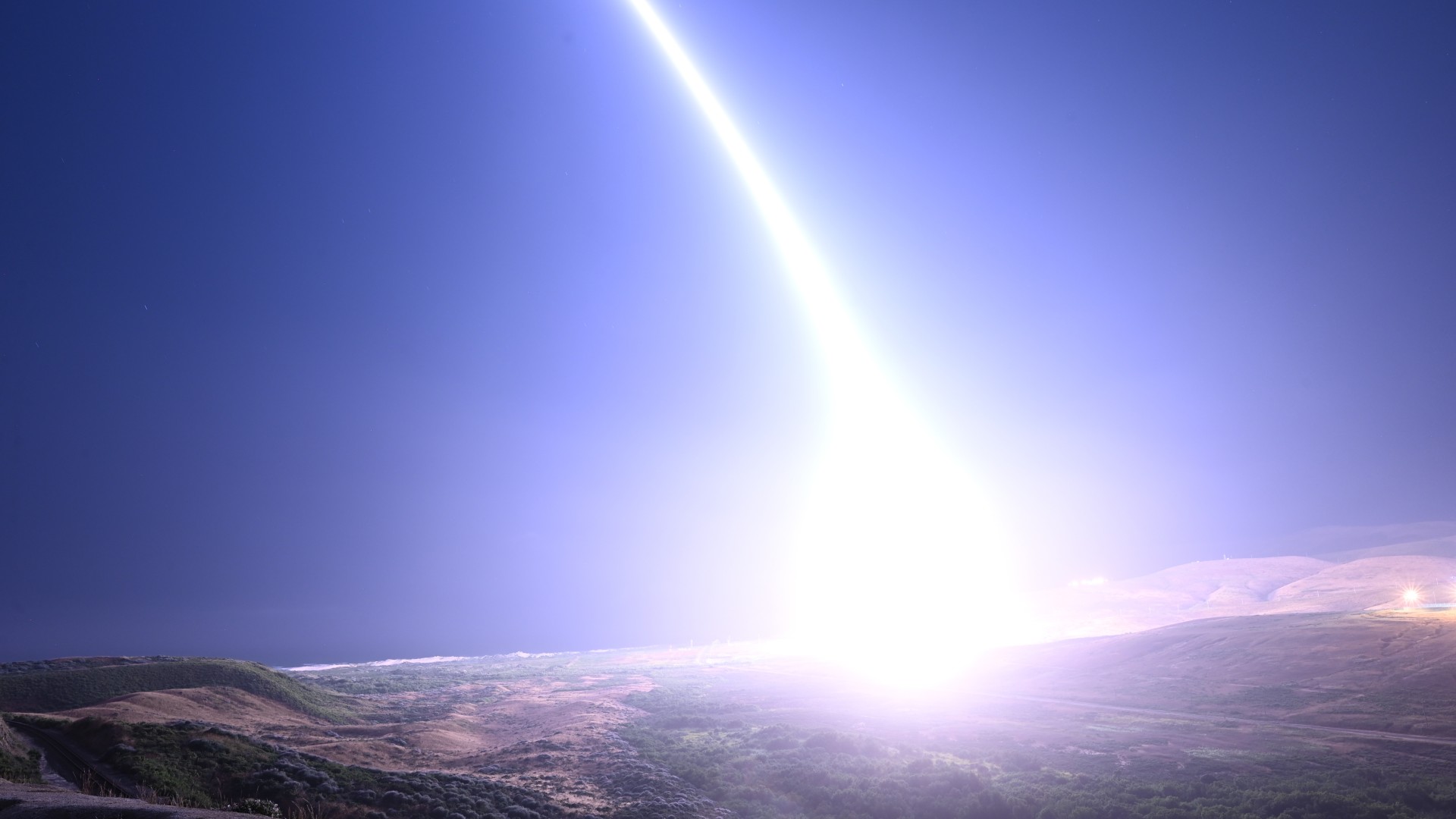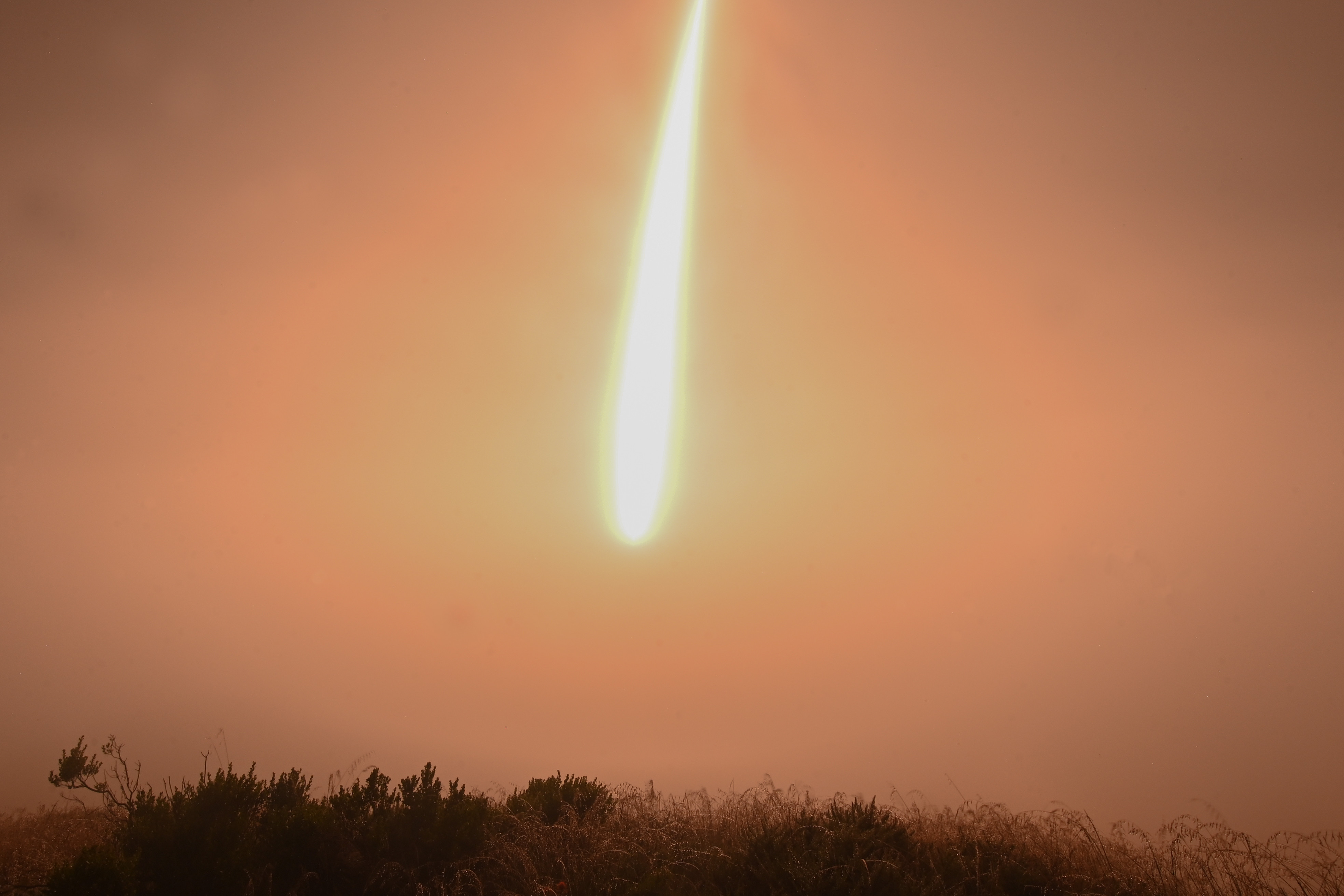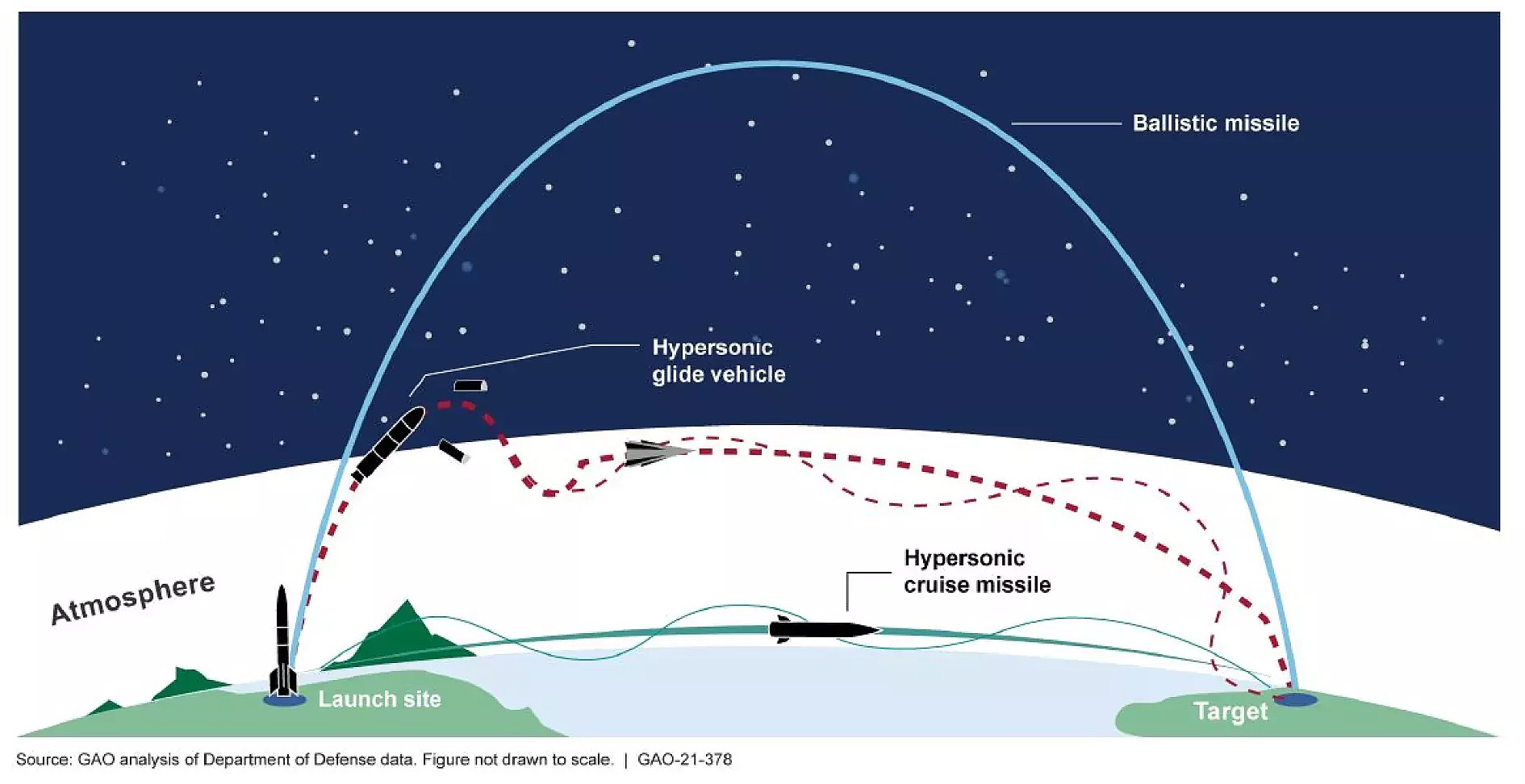US military test launches 2 unarmed intercontinental ballistic missiles in 2 days
The Minuteman III missiles were not armed, meaning they did not have a warhead aboard, but each carried one reentry vehicle.

The United States Air Force and U.S. Space Force conducted two routine test launches of unarmed intercontinental ballistic missiles this week.
The first of the two missiles took off from Vandenberg Space Force Base in California at 12:56 a.m. Pacific Time (0756 GMT) on June 4. The second launched at June 6 at 1:46 a.m. Pacific Time (0846 GMT) on June 6, also from Vandenberg. The Minuteman III missiles were not armed, meaning they did not have a warhead aboard, but each carried one reentry vehicle.
The U.S. Air Force regularly conducts such tests in order to "demonstrate that the United States' nuclear deterrent is safe, secure, reliable and effective to deter 21st century threats and reassure our allies," according to an Air Force Global Strike Command statement. The statement stresses that the tests were not launched in response to any "current world events" but were merely routine exercises.
After launch, both the Minuteman III intercontinental ballistic missiles (ICBM) flew some 4,200 miles (6,760 kilometers) before their reentry vehicles landed in the U.S. military's Reagan Ballistic Missile Defense Test Site in the Marshall Islands' Kwajalein Atoll.
In a statement, Col. Chris Cruise, 377th Test and Evaluation Group Commander praised the joint team of U.S. Air Force personnel and Space Force Guardians for its ability to carry out two tests in such a short period of time.
"The fact that we were able to complete two operational test launches in one week is a testimony to the excellence and professionalism of the Airmen and Guardians who do this mission every day," Cruise said in the statement. "This morning's launch demonstrates our commitment to deterrence as we serve as the cornerstone of security for our allies and partners across the globe."
In another Department of Defense statement, Lt. Col. Casey A. Rumfelt, range director for the Reagan Test Site, said the pace of the two launch exercises was the site's "version of the Super Bowl," and added that a third test will occur in the next few weeks.
Get the Space.com Newsletter
Breaking space news, the latest updates on rocket launches, skywatching events and more!
"To my knowledge, we have never had back-to-back Glory Trip missions like we had in early June with a follow-on major test that we will conduct later in the month. Make no mistake, the current level of testing is a good sign for the United States and our allies."

Like all ICBMS, both of the Minuteman III missiles in these tests were launched into suborbital space with a rocket engine before releasing their reentry vehicles back through Earth's atmosphere.
Most of these reentry vehicles travel on ballistic, or free fall, trajectories, although new types of reentry vehicles that can travel at hypersonic speeds and maneuver while gliding toward their targets are in development worldwide.

These new types of hypersonic reentry vehicles are much more difficult to defend against due to their ability to maneuver mid-flight, not to mention their high speed. Hypersonic vehicles are those that can travel at speeds of Mach 5 and higher. (Mach 1 is the speed of sound — about 767 miles per hour, or 1,234 kilometers per hour, at sea level.)
New types of defenses, including advanced interceptors and sophisticated satellite tracking systems are being developed in attempt to mitigate the threats these hypersonic weapon systems pose.
Join our Space Forums to keep talking space on the latest missions, night sky and more! And if you have a news tip, correction or comment, let us know at: community@space.com.

Brett is curious about emerging aerospace technologies, alternative launch concepts, military space developments and uncrewed aircraft systems. Brett's work has appeared on Scientific American, The War Zone, Popular Science, the History Channel, Science Discovery and more. Brett has English degrees from Clemson University and the University of North Carolina at Charlotte. In his free time, Brett enjoys skywatching throughout the dark skies of the Appalachian mountains.
-
576th Vet Feel sorry those guys doing back to back launches. It can be crazy enough just doing one. Especially if things go wonky during the last major test before the missle is installed in the silo. Hope they didn't get too wore out.Reply
- 98-01 576th FLTS Instrumentation Lab MM3 site tech. -
serioxsly When North Korea does it, it's warmongering, When the US does it, they pat themselves on the back.Reply









